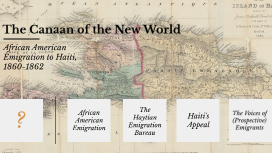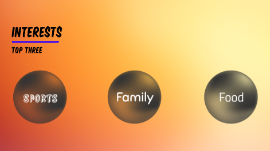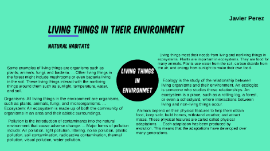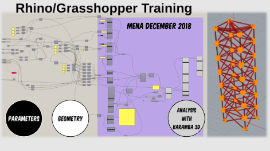Simple Template
Transcript: The Canaan of the New World African American Emigration to Haiti, 1860-1862 ? What distinguished Haiti from other African American emigration projects in the mid-nineteenth century? - distinct from African colonization - Haiti held great symbolic value - the Haitian government provided incentives - emigrating to Haiti meant participating in a Black nationalist nation-building project - emigration to Haiti was not a repudiation of their American identity African American Emigration African American Emigrationism American Colonization Society African Colonization The plan of removing free Black people to West Africa resonated with many white Americans in the nineteenth century. The most important vehicle was the American Colonization Society (ACS), which established the colony of Liberia shortly after its founding in 1816. The ACS membership certificate illustrates the organization's goal of presenting itself as a benevolent society. Even though individual African Americans had supported the ACS from the beginning and several thousand indeed resettled to West Africa, most Black leaders accused the organization of promoting racial hatred. After its activity and support had died down considerably in the 1840s, colonizationist ideas once again gained vast popularity in the tense political and social climate of the 1850s. This context is significant to understanding the arguments made by the supporters of the Haitian emigration movement. They stressed that they were in no way affiliated with the ACS and that emigration and African colonization were fundamentally different. 1 Madison, James, and American Colonization Society. American Colonization Society to James Madison. Membership Certificate. 1816. Library of Congress. National Emigration Convention (1854) National Emigration Convention The Cleveland Convention was part of the Colored Conventions Movement, which comprised a number of national and state-wide meetings organized by African American leaders and activists. Instead of presenting a more open forum for debate, the delegates who came together in Cleveland all supported emigration. While the focus was on Canada, the minutes provide insights into general pro-emigration arguments (which are clearly responding to the more dominant anti-emigration sentiment among other African American spokespersons). Emigration is presented as a positive act of self-determination and self-respect and the only path to freedom. Several of the organizers became affiliated with the Haitain emigration movement a few years later. 2 Proceedings of the National Emigration Convention of Colored People. Pittsburgh: By A. A. Anderson, Print, 1854 Frederick Douglass Opposition Identifying the United States as the only true homeland of African Americans, Frederick Douglass was among the most outspoken critics of African American emigration, and especially colonization. This article published in Douglass’ Monthly in 1861 represents a brief moment in his career, in which he seemed to have been more open to the idea of emigration, and in which he weighed in on the specific benefits of Haiti as a destination. This is an important source because it shows how pervasive the idea of emigration was in the early 1860s, even among African Americans who has previously staunchly rejected it. It also demonstrates the particular appeal of Haiti over other destinations, since Douglass continued to reject places such as Liberia, Haiti seemed to be a different story. 3 “Emigration to Hayti.” Douglass’ Monthly III, no. VIII (January 1861): 386-7. "Frederick Douglass," 1856. National Portrait Gallery, Smithsonian Institution. The Haytian Emigration Bureau The Haytian Emigration Bureau The Haytian Emigration Bureau, based in Boston, was founded to promote the emigration of African Americans to Haiti. While the promise of economic advancement was part of the Bureau's recruitment strategy, this poem, disseminated through the Bureau's weekly newspaper, illustrates a different argument used to promote Haiti. In direct contrast to the United States, Haiti would be a welcoming home(land). African American readers of the paper may have a roof over their head in the US, but they were part of a generally hostile society. Just because the United States was the country of their birth did not make it a loving home. 4 The Pine and Palm 1, no. 14 (August 17, 1861). James Redpath (1833-1891) James Redpath This source represents 27 handwritten reports by James Redpath related to his work as General Agent of the Haytian Emigration Bureau in Boston, as well as a number of letters. Since the Bureau was funded by the Haitian government, Redpath wrote detailed weekly reports on his recruitment activities to Victorin Plésance, Haiti’s Secretary of State. This source reveals some of the strategies Redpath used to promote emgiration. One major part of the effort was enlisting African American leaders as agents of the Bureau. Other entries also suggest that Redpath actively tried to

















